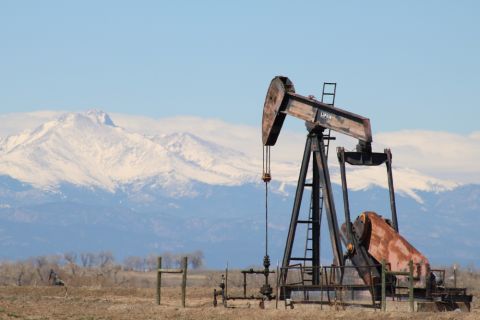
(Source: Shutterstock)
The oil and gas industry has succeeded in putting a dent in emissions of methane and volatile organic compounds (VOC), the Environmental Partnership said in its first annual report, released on July 30.
The group, administered by the American Petroleum Institute (API), reported that more than 56 million equipment components—valves, flanges and connectors—were inspected at about 80,000 sites in 2018. The leak occurrence rate was 0.16%, meaning that fewer than two leaks were discovered for every 1,000 components inspected.
“This industry is leading the way in ensuring that methane emissions go down,” said Mike Sommers, API’s president and CEO, during a conference call with reporters.
Methane emissions from U.S. natural gas operations have declined by 14% since 1990, despite an increase in gas production of more than 50% during that period, said Matthew Todd, the partnership’s program director.
“Thanks to the growth in natural gas usage, U.S. greenhouse gas emissions from power generation have fallen by 25% since 2005, helping to bring America’s total greenhouse gas emissions to near-25-year lows,” Todd said.
The partnership has grown from an initial 26 companies when it formed in 2017 to 66 members that operate in all major U.S. basins. It focuses on three areas: leak detection and repair; reduction of high-bleed pneumatic controllers; and improving the manual liquids unloading process.
In 2018, members either replaced, retrofitted or removed 3,000 high-bleed pneumatic controllers from service. The controllers are typically located at production and gathering facilities and use gas pressure to operate mechanical devices. They are a significant source of methane and VOC emissions because they are so widely in use.
Solutions include conversion to continuous low-bleed controllers, intermittent-vent controllers, electrically operated controllers, use of compressed air instead of gas, or simply remove from service if that is feasible. The partnership seeks to replace all of the high-bleed devices within five years. So far, 38 of the participating companies no longer use high-bleed pneumatic controllers.
The partnership is a voluntary program designed to encourage members of the oil and gas industry, especially smaller companies, to engage in emission reduction beyond the minimum mandated by state and federal regulations. Not all of the smaller operators have the resources to achieve this on their own, so the partnership assists but without setting unrealistic goals.
“We believe that setting reduction minimum or maximum emission goals could potentially inhibit recruitment,” Todd said. “It could add significant burdens for companies to participate and ultimately distract from some of the broader goals of the learning, collaborating and taking action to improve the industry’s environmental performance.”
But even without an estimate of the total emission reduction accomplished by partnership participants in 2018, the group is confident that it has succeeded in achieving cuts. Todd cited U.S. Environmental Protection Agency (EPA) data that pointed to a 40% emissions reduction through finding and repairing leaks; and a 60% reduction when high-bleed pneumatic controllers are replace.
A study released in April by researchers from the University of Colorado-Boulder, the National Oceanic and Atmospheric Administration and Lawrence Berkeley National Laboratory countered previous studies by concluding that methane emissions have not increased as much as feared.
The study examined 20 oil and gas operations from 2006 to 2015. Researchers found no significant increase in emissions at most of the sites and modest increases at three sites heavily impacted by oil and gas activities. They also said that previous studies had made major overestimations of oil and gas emission trends.
Sommers cited the 2009 American Clean Energy and Security Act, also known as the Waxman-Markey bill, that would have created an emissions trading plan, or “cap-and-trade system.” The bill, which did not pass into law, set a greenhouse-gas reduction target of 17% by 2020.
“We’re well below what they said would occur under Waxman-Markey,” he said. “That’s a consequence of the innovation that has occurred in this industry.”
Follow Joseph Markman on Twitter at @JHMarkman.
Recommended Reading
Marketed: Confidential Seller Certain Mineral, Royalty Interests in Louisiana
2024-02-13 - A confidential seller retained RedOaks Energy Advisors for the sale of certain mineral and royalty interests in Louisiana.
Marketed: Private Seller Certain Royalty Properties in D-J Basin
2024-02-13 - A private seller retained RedOaks Energy Advisors for the sale of certain royalty properties in the D-J Basin.
California Resources Corp., Aera Energy to Combine in $2.1B Merger
2024-02-07 - The announced combination between California Resources and Aera Energy comes one year after Exxon and Shell closed the sale of Aera to a German asset manager for $4 billion.
Select Water Solutions Bolts On Haynesville, Rockies Assets for $90MM
2024-01-31 - Select Water Solutions Inc. added disposal and recycling capacity in the Haynesville Shale and the Rockies across three acquisitions in January.
Marketed: Anadarko Minerals Woodford Shale Opportunity
2024-02-26 - Anadarko Minerals has retained EnergyNet for the sale of a Woodford Shale opportunity in Blaine County, Oklahoma.



